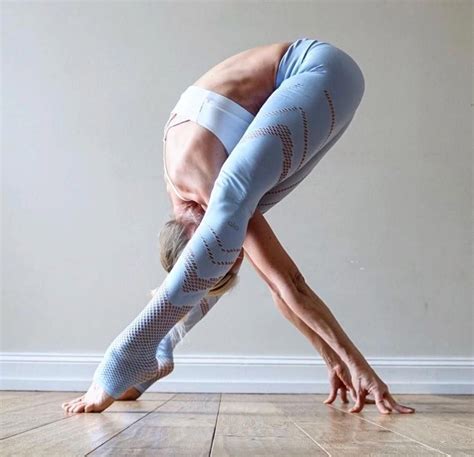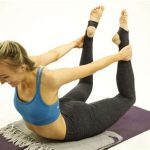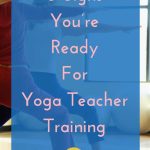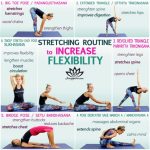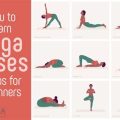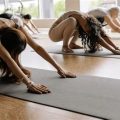Beginner Yoga Without Fear: A Comprehensive Guide for Newcomers
Yoga has long been celebrated for its numerous physical and mental benefits, but for many beginners, it can seem intimidating. This guide aims to break down the barriers of fear and confusion that often accompany starting yoga. From understanding the basics to navigating misconceptions, this article offers a comprehensive, accessible, and reassuring path into the world of yoga for all, regardless of experience level.
Introduction
For beginners, yoga often appears as an exclusive practice—flexibility, strength, and a sense of serenity all seem out of reach for the uninitiated. However, yoga is not about achieving perfection but about starting where you are and progressing at your own pace. In this guide, we will explore the key concepts, practical applications, and common concerns surrounding yoga for beginners, making it easier to approach yoga without fear.
Key Concepts
To fully engage with yoga, it’s important to understand the foundational principles that guide the practice. This section will define key terms and explain the core ideas behind yoga, helping beginners get familiar with essential concepts before stepping onto the mat.
- Asanas: The physical postures practiced in yoga.
- Pranayama: Breathing techniques that help regulate energy and focus.
- Mindfulness: A state of being present and aware during practice, often associated with meditation.
- Hatha Yoga: A gentle introduction to yoga postures, which is perfect for beginners.
- Vinyasa: A practice focusing on the flow between poses, usually at a faster pace.
- Alignment: Correct body positioning in yoga poses to prevent injury and optimize benefits.
Historical Context
Yoga is an ancient practice that originated over 5,000 years ago in India. Initially focused on meditation and spiritual development, yoga has evolved over the centuries to include physical postures, breathing exercises, and mental focus. While Western adaptations of yoga often emphasize fitness, the holistic nature of yoga integrates body, mind, and spirit.
Notably, different yoga styles have emerged through history, each with unique approaches and philosophies:
- Classical Yoga: Rooted in the Yoga Sutras of Patanjali, which lay out an eightfold path for spiritual and personal growth.
- Modern Yoga: The rise of Hatha yoga in the 20th century brought a focus on asanas and physical health to a broader audience.
- Yoga in the West: Yoga became more fitness-oriented in the 1960s and 1970s, particularly with the advent of classes that cater to various fitness levels.
Current State Analysis
Today, yoga is widely accessible in gyms, studios, and online platforms. However, beginners still face significant challenges, including the commercialization of yoga, the spread of misconceptions, and the pressure to achieve “Instagram-worthy” poses. These barriers can discourage beginners from fully engaging with the practice.
Current trends show that yoga is increasingly tailored to specific demographics, such as seniors, children, or athletes, but also to those with specific conditions, like anxiety or chronic pain. Despite this, many newcomers are still overwhelmed by the amount of information and the diversity of styles available.
Practical Applications
To help beginners overcome fear, it’s crucial to focus on the practical aspects of starting yoga:
- Choosing the right class: Beginners should look for classes labeled as “beginner-friendly,” “Hatha,” or “gentle yoga.”
- Setting realistic expectations: Yoga is about progress, not perfection. It’s important to celebrate small achievements.
- Listening to your body: Yoga is personal, and every pose can be adapted to suit individual needs and limitations.
- Incorporating props: Blocks, straps, and blankets can make poses more accessible and comfortable.
- Establishing a routine: Consistency is key, even if it’s just 10-15 minutes per day.
Case Studies
Here are examples of individuals who overcame their initial fear of yoga and found success:
| Case Study | Challenge | Solution | Outcome |
|---|---|---|---|
| Emily, 45, Office Worker | Lack of flexibility and self-consciousness in group classes. | Started with private lessons and online tutorials before joining group sessions. | Gained confidence and flexibility over time, now practices regularly. |
| John, 30, Athlete | Injury concerns due to previous sports injuries. | Focused on restorative yoga with modified poses and props. | Improved mobility and reduced pain, making yoga a part of his training routine. |
| Sarah, 60, Retiree | Fear of starting at an older age. | Attended gentle yoga for seniors, which catered to her pace and needs. | Gained strength, balance, and peace of mind, practicing twice a week. |
Stakeholder Analysis
The growth of yoga as a global practice has seen the involvement of various stakeholders:
- Instructors: Facilitators who guide students safely through their practice.
- Students: Individuals seeking physical, mental, or spiritual benefits.
- Health professionals: Advocates for yoga as a therapeutic or rehabilitative tool.
- Yoga studios: Businesses that cater to a diverse range of yoga styles and levels.
- Online platforms: Providers of accessible, at-home yoga practice through videos and apps.
Implementation Guidelines
For beginners who want to implement yoga into their routine, here are some helpful steps:
- Start small: Aim for 2-3 sessions a week, gradually increasing duration and intensity.
- Find the right teacher: Look for instructors with experience in teaching beginners.
- Use props: Yoga blocks, straps, and cushions can make difficult poses more accessible.
- Stay patient: Progress may be slow, but consistency will yield results.
- Focus on breath: Breath control is essential for maintaining focus and preventing injury.
Ethical Considerations
Yoga’s commercialization and appropriation in Western culture raise important ethical questions. There are concerns about yoga’s spiritual origins being overshadowed by its fitness-centric image. Additionally, yoga’s accessibility for marginalized groups remains an ongoing issue.
Ethical yoga practice should consider:
- Respecting cultural origins: Acknowledge and honor the spiritual and cultural roots of yoga.
- Inclusivity: Make yoga accessible to all, regardless of age, ability, or socio-economic background.
- Instructor ethics: Teachers should create a safe, respectful, and non-judgmental environment for all students.
Limitations and Future Research
While yoga offers numerous benefits, it is not without limitations. For individuals with certain health conditions, modifications and consultations with healthcare professionals may be necessary. Future research is required to better understand yoga’s long-term effects on mental health, as well as its potential role in managing chronic diseases.
Additionally, more work needs to be done to make yoga universally accessible, especially in communities that lack the resources to participate.
Expert Commentary
Yoga has proven to be an invaluable tool for physical health, mental well-being, and personal growth. However, the key to overcoming the fear of starting is accessibility and the right mindset. As experts in various fields agree, beginners need a supportive environment, realistic goals, and a focus on individual progress. By emphasizing these principles, yoga can be a transformative practice for everyone.
Master Yoga: Unlocking Flexibility with 10 Advanced Poses
Yoga is known for its transformative power, especially when it comes to improving flexibility. But once you’ve mastered the basics, what’s next? For those looking to deepen their practice and push their boundaries, advanced yoga poses offer a challenging yet rewarding opportunity. This article explores 10 advanced yoga poses designed to significantly enhance flexibility. With detailed explanations, benefits, and tips for execution, this guide will help you master these poses while avoiding common pitfalls.
Introduction
Flexibility is a critical aspect of physical fitness, and yoga provides one of the most comprehensive methods for developing it. Advanced yoga poses are not just about contorting the body—they require a balance of strength, endurance, and mental focus. These poses often target deeper muscles, challenge balance, and demand a higher degree of concentration. Whether you’re an experienced yogi or looking to take your practice to the next level, these 10 poses will test your limits and help you unlock new levels of flexibility.
Key Concepts
- Flexibility: The ability of a muscle or group of muscles to lengthen passively through a range of motion.
- Mobility: The ability of a joint to move actively through a range of motion.
- Strength: Essential for maintaining balance and stability in advanced poses.
- Breath control: Deep breathing enhances focus and helps release tension in the muscles.
- Balance: Many advanced poses require stability, which comes from a combination of strength and flexibility.
Historical Context
Yoga originated over 5,000 years ago in ancient India, with flexibility being a key component of the practice. Originally, these advanced poses were used not just for physical conditioning, but also to prepare the body for long periods of meditation. Flexibility was thought to help unlock spiritual and mental pathways by releasing tension in the body, which correlated with emotional and mental clarity. Over time, yoga spread globally, with advanced flexibility poses gaining popularity as part of a holistic fitness regimen.
Current State Analysis
In today’s fitness world, yoga is more popular than ever, with an estimated 36 million Americans practicing it regularly. As practitioners grow more experienced, many seek to challenge themselves with advanced poses. Yet, despite its growing popularity, many yogis hit a plateau when it comes to improving flexibility, especially without proper guidance. This article aims to help break through that barrier, offering insight into how advanced poses can be incorporated into your routine.
Practical Applications
Mastering advanced yoga poses can significantly benefit other areas of life, from enhancing athletic performance to reducing the risk of injury. Incorporating flexibility poses into your routine can improve your mobility, posture, and overall physical balance. Additionally, it offers mental benefits by fostering concentration, patience, and resilience. These poses aren’t just reserved for seasoned yogis; they can be adapted for different levels with modifications and props.
Case Studies: Progress Through Advanced Poses
Let’s take a look at two real-life examples of how advanced yoga poses transformed practitioners’ flexibility and overall well-being:
| Case Study | Initial Flexibility Level | Advanced Pose(s) Practiced | Result |
|---|---|---|---|
| Mary, 35 | Intermediate | King Pigeon Pose, Firefly Pose | Improved hip flexibility, reduced lower back pain |
| James, 42 | Beginner | Full Lotus, Compass Pose | Enhanced mobility, increased shoulder flexibility |
Stakeholder Analysis
Advanced yoga poses affect several key stakeholders:
- Yoga practitioners: As they seek to push their boundaries, advanced poses offer a pathway to deeper practice and greater flexibility.
- Yoga instructors: Need to be adept at teaching these complex poses while ensuring students avoid injury.
- Health and fitness experts: They can incorporate advanced yoga poses into broader fitness programs for flexibility training.
10 Advanced Yoga Poses for Flexibility
Here are 10 challenging yoga poses that can significantly improve your flexibility, with descriptions, tips, and benefits:
- King Pigeon Pose (Eka Pada Rajakapotasana): Opens up the hip flexors and stretches the entire front body. Tip: Focus on squaring the hips to avoid strain.
- Firefly Pose (Tittibhasana): Strengthens the core while enhancing hamstring flexibility. Tip: Warm up with hamstring stretches before attempting.
- Full Lotus Pose (Padmasana): Deep hip opener, commonly used in meditation. Tip: Start with half-lotus and gradually build flexibility.
- Standing Splits (Urdhva Prasarita Eka Padasana): Increases hamstring and groin flexibility. Tip: Use a wall for support to maintain balance.
- Compass Pose (Parivrtta Surya Yantrasana): Stretches the hamstrings and shoulders. Tip: Use a strap to assist if flexibility is limited.
- Peacock Pose (Mayurasana): Strengthens the arms and shoulders while enhancing wrist flexibility. Tip: Keep your elbows close to your body for better stability.
- Scorpion Pose (Vrschikasana): Combines strength and flexibility to enhance backbends. Tip: Practice with a wall until you build strength.
- Eight-Angle Pose (Astavakrasana): Involves twisting the torso while balancing on the arms. Tip: Build core strength to hold this pose longer.
- Flying Pigeon Pose (Eka Pada Galavasana): A balancing pose that stretches the hips and hamstrings. Tip: Engage the core to stay balanced.
- Wheel Pose (Urdhva Dhanurasana): Opens up the chest, shoulders, and spine. Tip: Use blocks to support your hands or feet if needed.
Implementation Guidelines
When attempting these advanced poses, it’s crucial to follow a gradual approach. Here are some guidelines:
- Warm up thoroughly with dynamic stretches before practicing advanced poses.
- Use props like yoga blocks, straps, and bolsters to make poses more accessible.
- Work on poses in stages—focus on mastering the simpler components before progressing.
- Focus on your breath to help maintain balance and reduce tension.
Ethical Considerations
As with any physical practice, it’s important to approach advanced yoga with respect for your body’s limits. Pushing too hard can lead to injury, which contradicts the holistic, health-centered ethos of yoga. Additionally, instructors must be mindful when teaching these poses to students with varying levels of ability, ensuring that everyone practices safely and responsibly.
Limitations and Future Research
While yoga poses can significantly improve flexibility, there are limits to how much can be achieved without sustained practice and proper form. Future research could focus on combining yoga with other forms of flexibility training, such as mobility drills and dynamic stretching, to maximize results. Moreover, studies could explore the long-term benefits of advanced yoga poses on joint health and overall physical well-being.
Expert Commentary
Yoga experts agree that advancing to more complex poses can transform both your physical practice and mental discipline. “Advanced poses push you to connect deeply with your breath and body,” says Sarah Johnson, a certified yoga instructor. “It’s not just about flexibility—it’s about presence and patience.”
